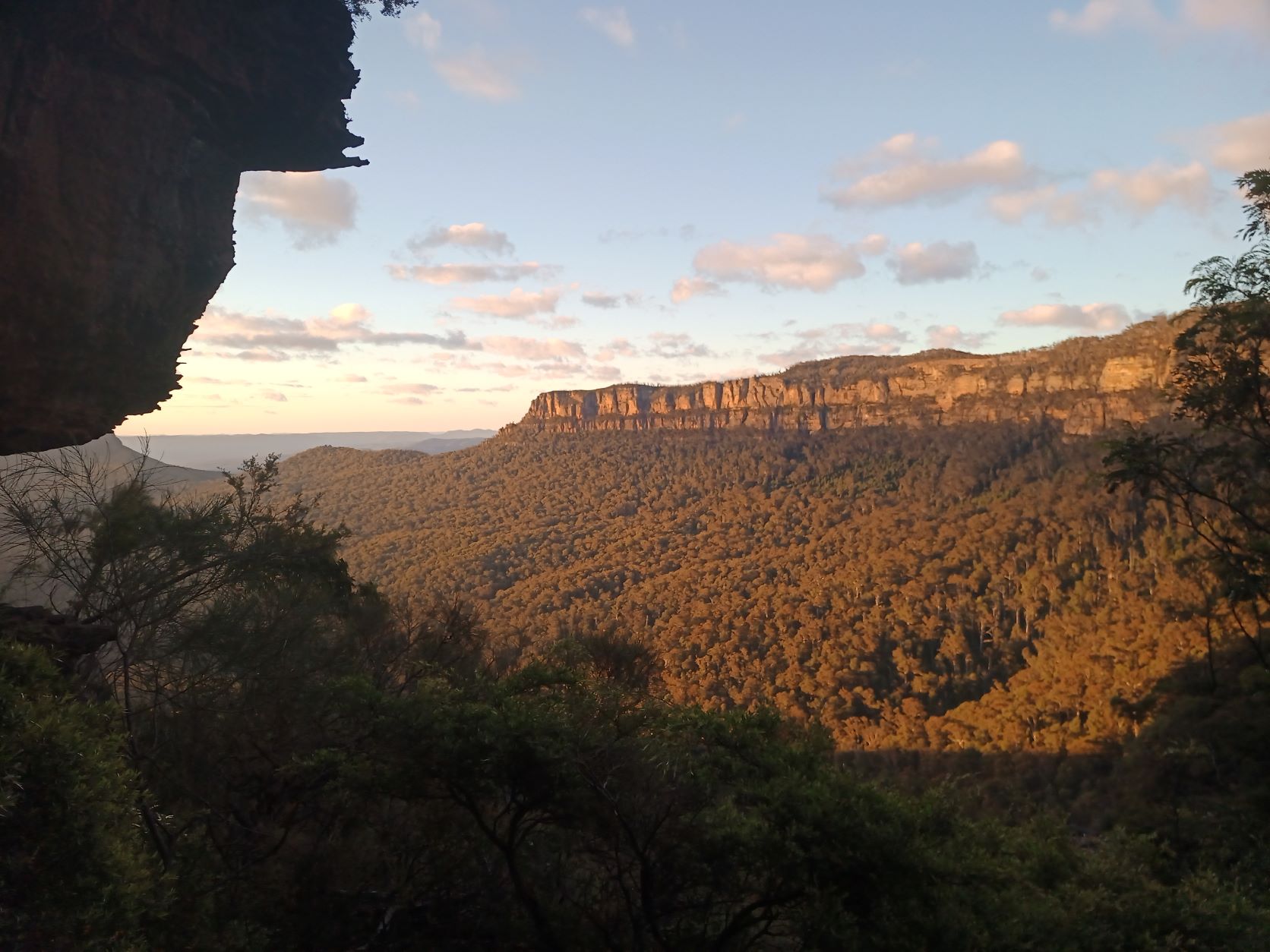
Fourteen Narrowneck Passes
There are fourteen known bushwalking passes along the rim of the 12km long protrusion of plateau that juts to the south of Katoomba. This trip completed them all in one long day
Bushwalkers have known about many of the old Aboriginal passes through the Narrow Neck cliff line for over a century. There are old ladders, chains and spikes, placed by intrepid bushwalkers and miners over their decades of exploration.
There are fourteen known bushwalking passes along the rim of the 12km long protrusion of plateau that juts to the south of Katoomba. On the Eastern side are Landslide Gully, Golden Stairs, Walls Pass and the Wallaby Track. Tarros Ladders marks the Southern end. The Western side has Dixons (Waterboard) Ladders, Diamond Head, Redledge Pass, Rockpile Pass, Coachwood (Mitchells Creek) Pass, Black Billy Head, Carlon Head, Harmils Ledge/Glenraphael Head and Dunphys Pass.
Herbaceous Pass and Castle Head are not considered to be passes as fires have destroyed the tree and ladders that allowed buhwalkers access.
Most bushwalkers set out to do one or sometimes two of the Narrowneck Passes as a daywalk… the idea was to complete all fourteen known bush-walking passes consecutively… in a single day if possible.
Planning
Our route plan was to pair up passes so we could descend one, traverse along the talus or a ledge and then ascend the next. But some of the more remote ones had no convenient pair, so the only option was to bounce down and back up to the plateau. We ended up doing six of them twice for a total of twenty passes. Landslide Gully is arguably not on Narrowneck, but our view is that the access point is on GlenRaphael Drive so we included it, particularly as it was easy to pair with the Golden Stairs.
The other criteria was to complete the trickier ones while we were still fresh, so not finishing with Landslide, Dixons, Diamond Head, Walls, Black Billy Head, Coachwood or Carlon Head was a priority. The route we selected was to start in the North and work our way towards the four easier ones in the South, in the hope that we could complete the tricky ones before dark while we still had some coordination remaining.
Getting to the start
From Katoomba drive south on Glenraphael Drive past the narrow neck of Narrowneck to park at the locked gate.
Route
We both carried tape or handlines for some of the trickier scrambles, but mostly relied on the existing chains. However, some had been destroyed by the 2019 fires so be prepared. Some of the passes might be a little beyond the comfort zone of some so a harness may be preferable.
The aerial view shows our route starting at the locked gate and traveling mostly anti-clockwise stating with Golden Stairs.
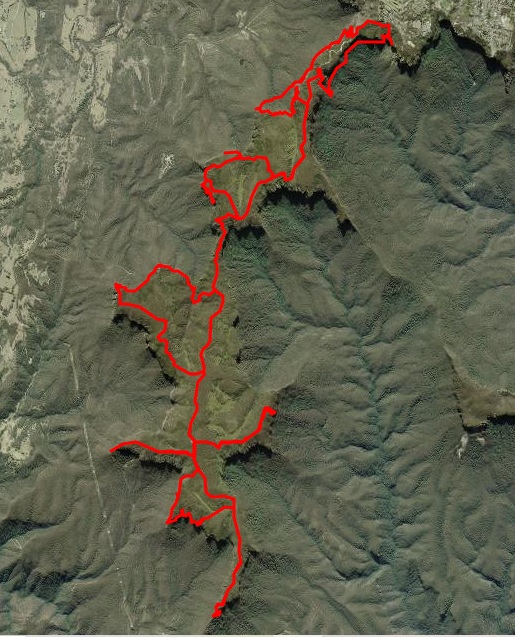
Golden Stairs and Landslide Gully
Starting at the locked gate at 5:17AM, we jogged back to descend the Golden Stairs and then headed north to the base of Landslide Gully (also known as Dogface Gully).
We had descended it previously, but never ascended. Clambering right up the convenient forked log past the slippery boulder was a minor challenge using fingertips on a thin crack.
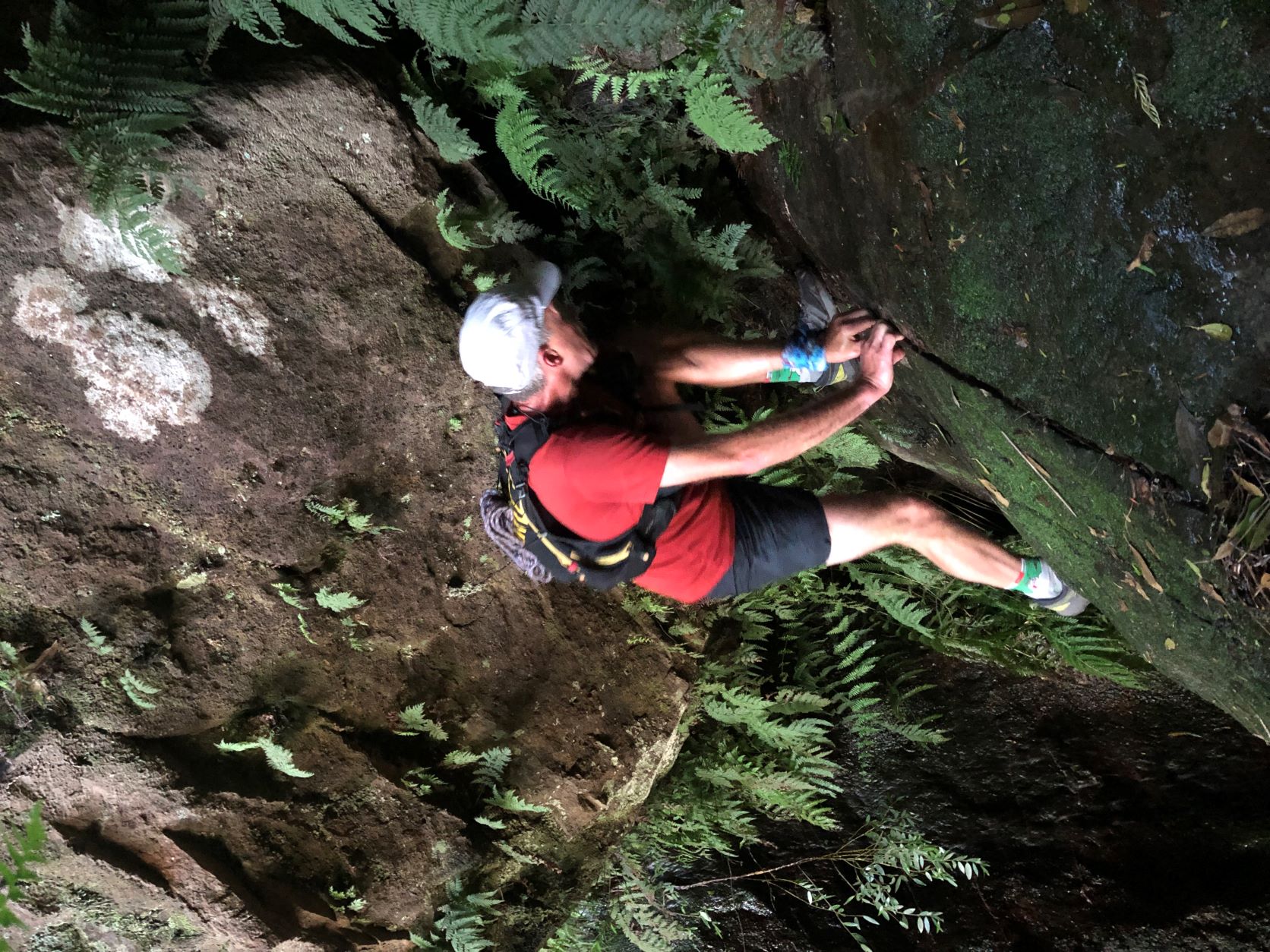
Then after easily albeit carefully crossing the top of the equally slippery 6m waterfall..
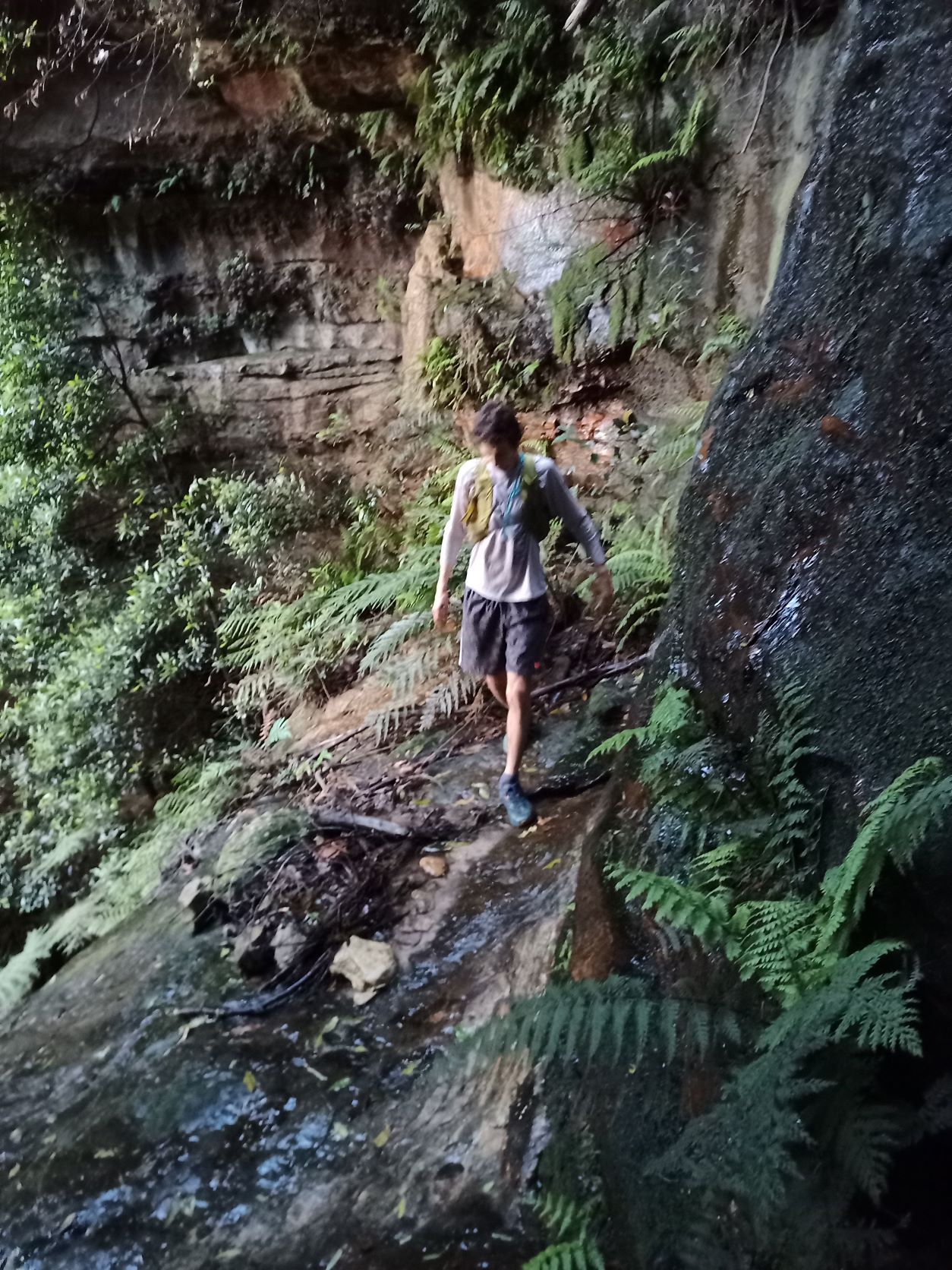
..we paused briefly to admire Narrowneck in the early dawn light just after 6AM.

Then came the 8m climbers rope that marked the chimney. We’d had rain recently, so it was soaked with a fine layer of damp moss. The climb is probably a grade 15, but the knotted rope provides sufficient safety to ascend without a harness.
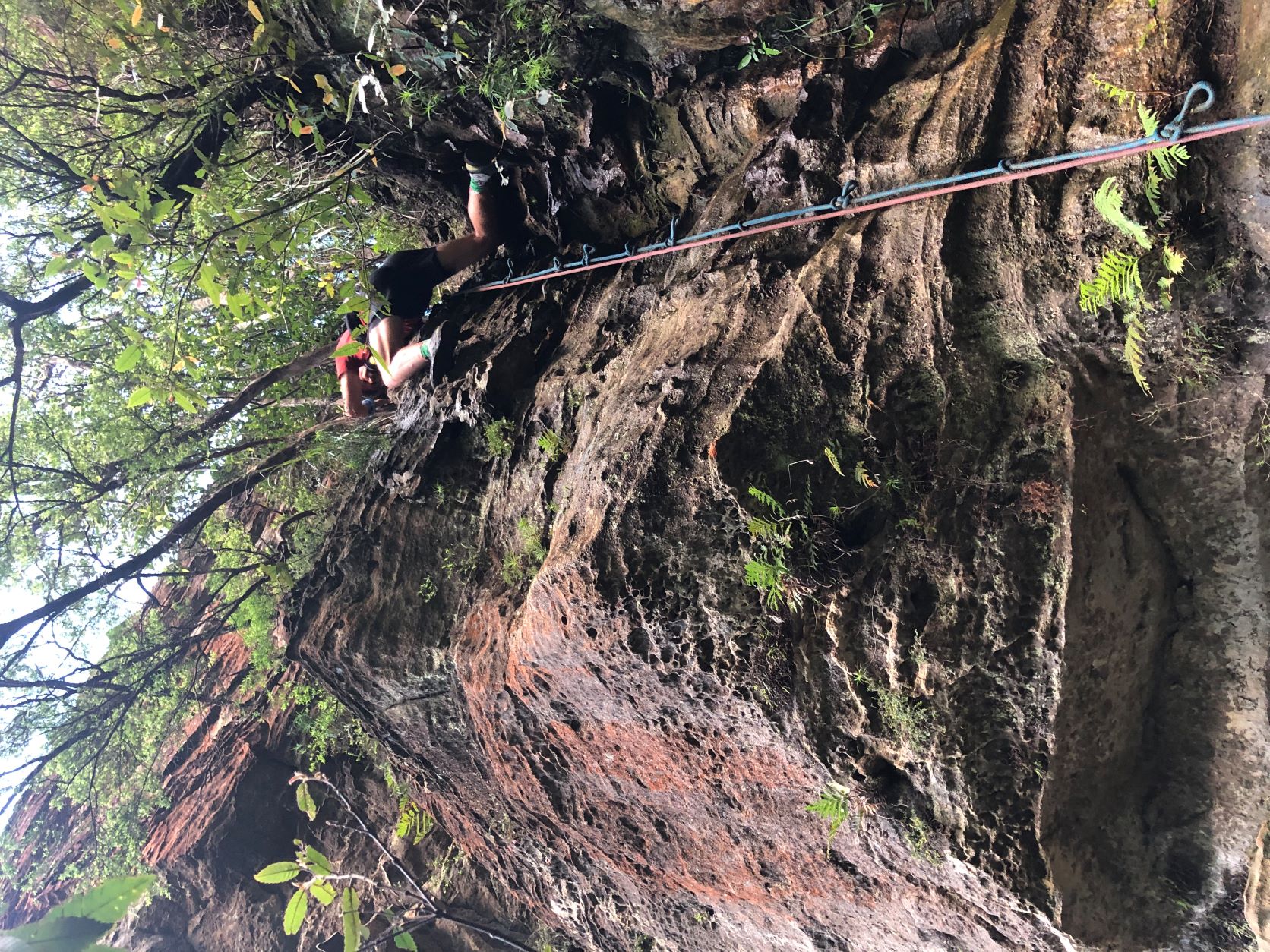
From there the good climbers track found us quickly back on GlenRaphael Drive. From there it was a short downhill jog to the Dixons Ladders turnoff, a quick view of Boars Head silhouetted in the morning light, and then the descent of the ladders.
Dixon Ladders to Diamond Head
The ladders are dangerous. Starting with a short rope assisted descent, then a climbdown over the railings brought us to the first significant obstacle - a rope down a narrow slippery chimney with few footholds. It flares out for the last 3m so extreme care is essential. Then there are two long enclosed steel ladders to descend. The last has tricky looped ropes to overcome for the bottom 4m. The talus is a welcome sight.
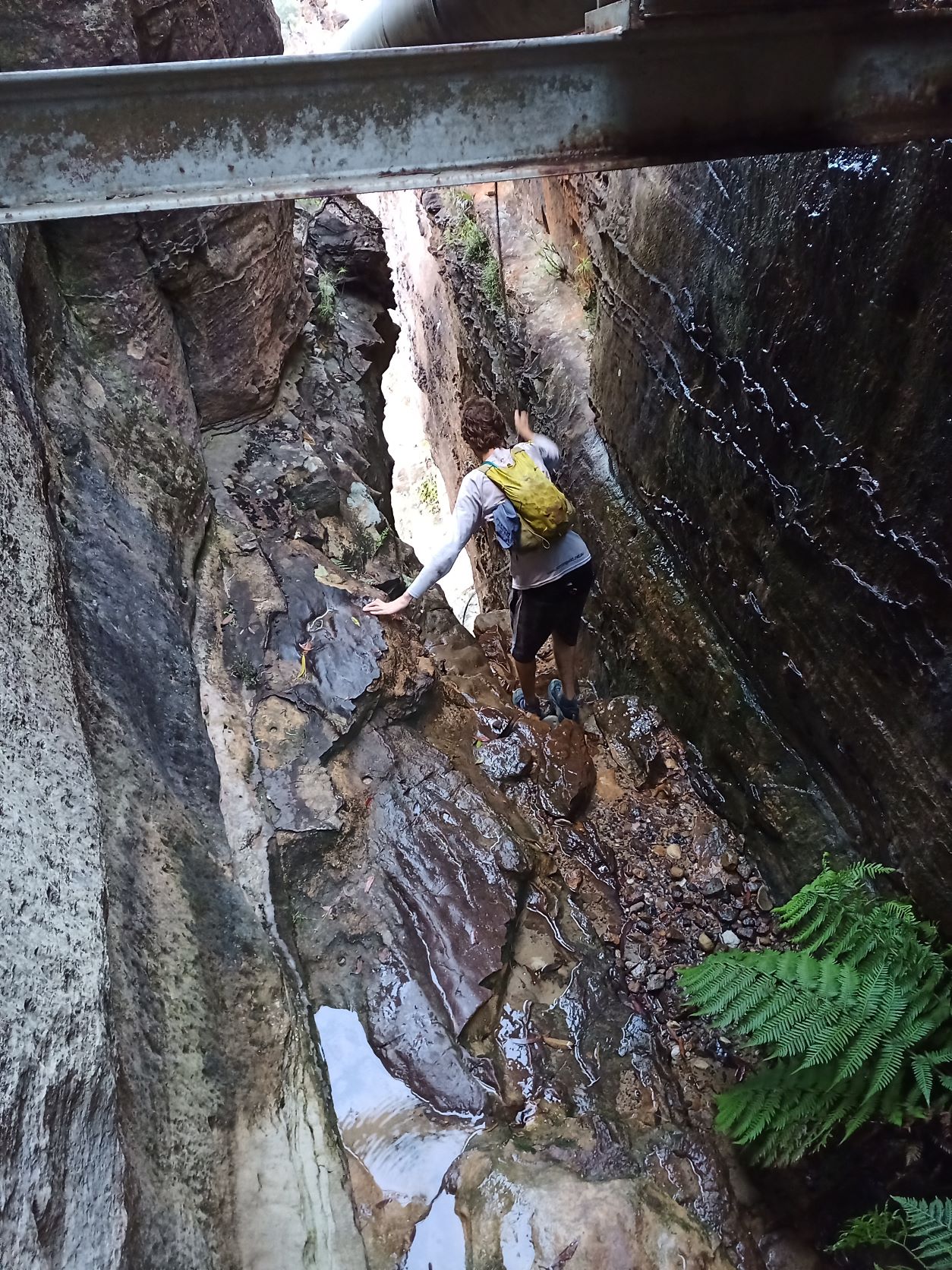
We’ve both done the talus traverse to the huge cave at the foot of Diamond Falls. So we knew it was okish for the first 500m, but then deteriorated to ledges and denser vegetation, with the last 400m to Diamond Head unknown. We decided to do it anyway.
After making good progress we hit some impassible ledges and had to backtrack and find lower ones. This was the first of our route planning decisions that could be improved.
The ledge at the top of Diamond Head Pass was a welcome sight - we were happy that three of the seven tricky passes completed by 8:22AM.
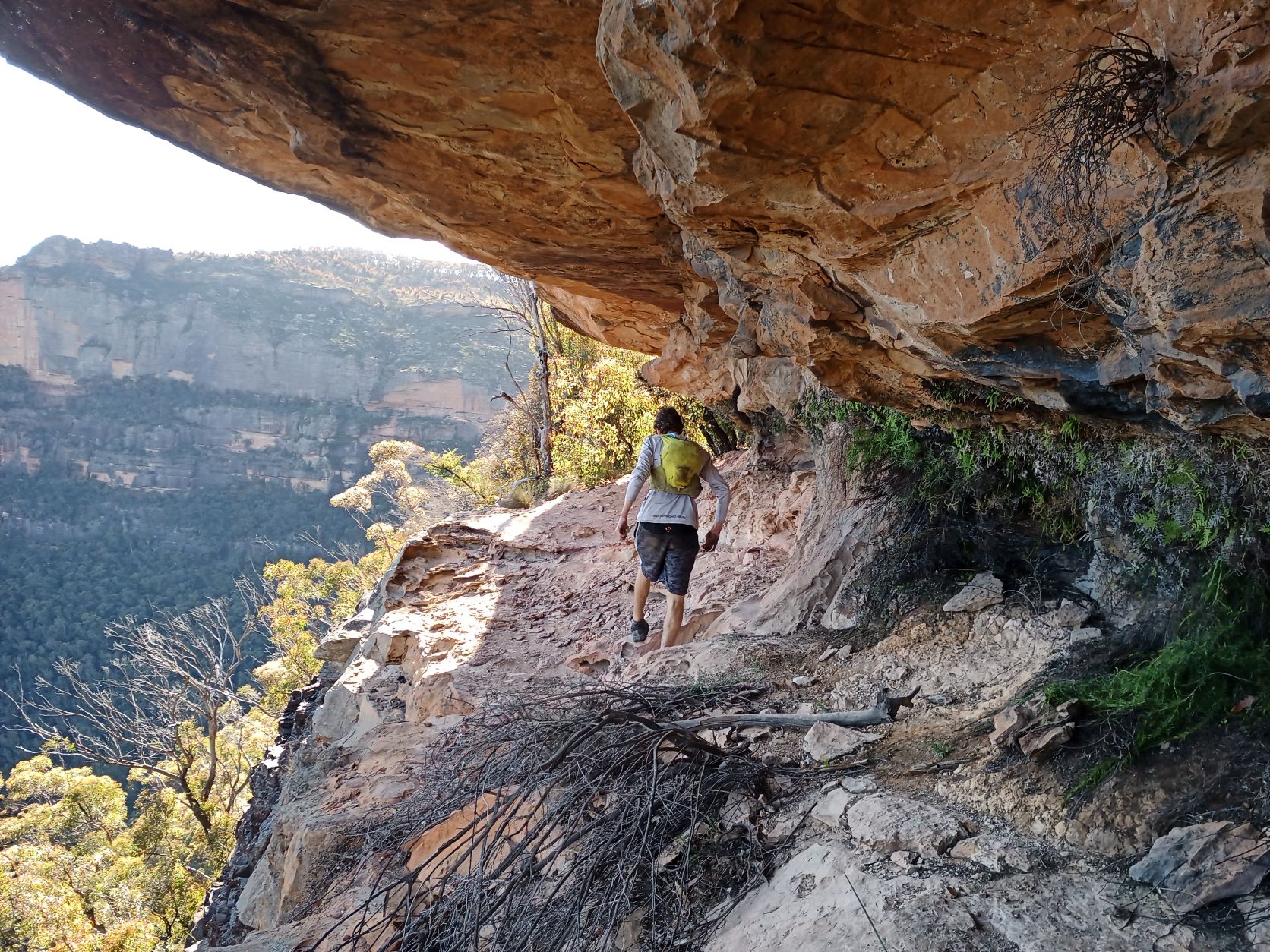
The ledge is spectacular with good views to the North and West.

Redledge Pass
Leaving the ledge early and crossing the tops through sparse skeleton remains of the fires led to the Redledge Pass
Redledge Pass is visited frequently. Adding an entry to the logbook we descended steeply under the huge chockstone to the talus, and immediately retraced our step to regain that elevation and return to the logbook.

Rock Pile Pass
Leaving the ledge we followed the good track above the creek to reach the steep track up the gully to the South that led us over the plateau. Then the wide ramp down to the ledge and a left turn to reach the base of the part of the pass that it’s named after. We ignored the ascent, dropped our packs and continued to the two short rope assisted descents. Both ropes had been destoryed by the 2019 fires. We both carried short tapes, so the descent and immediate ascents were easy enough.
Then up Rock Pile Pass.
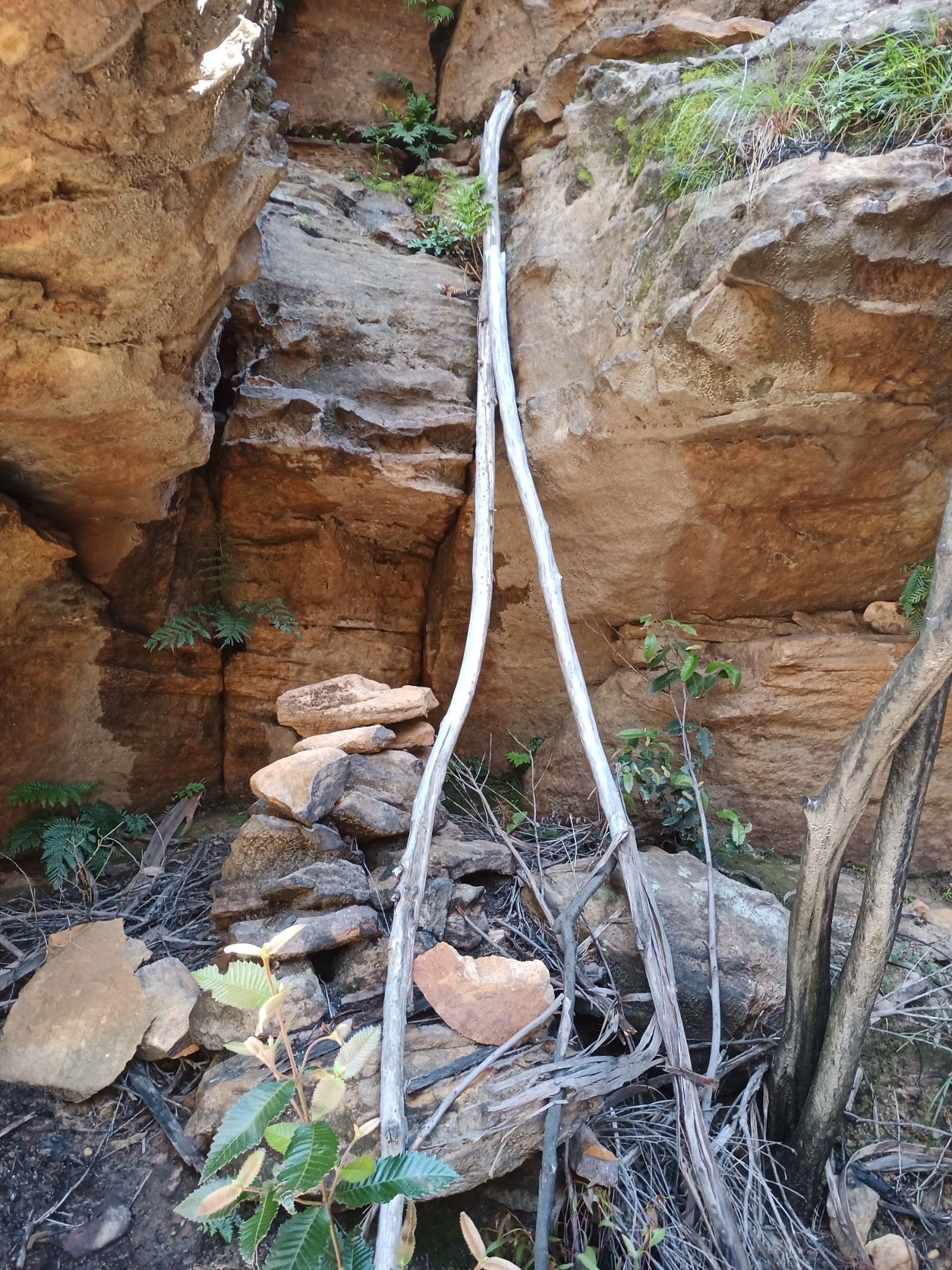
With the sixth pass completed a little before 11AM, we headed back up to the plateau to find the good footpad back to the firetrail.
Then a bit of fire trail jogging down the big hill to get past the 2nd narrow neck. A quick check to see if there was enough water flowing in the gutter to be useful on the return trip.
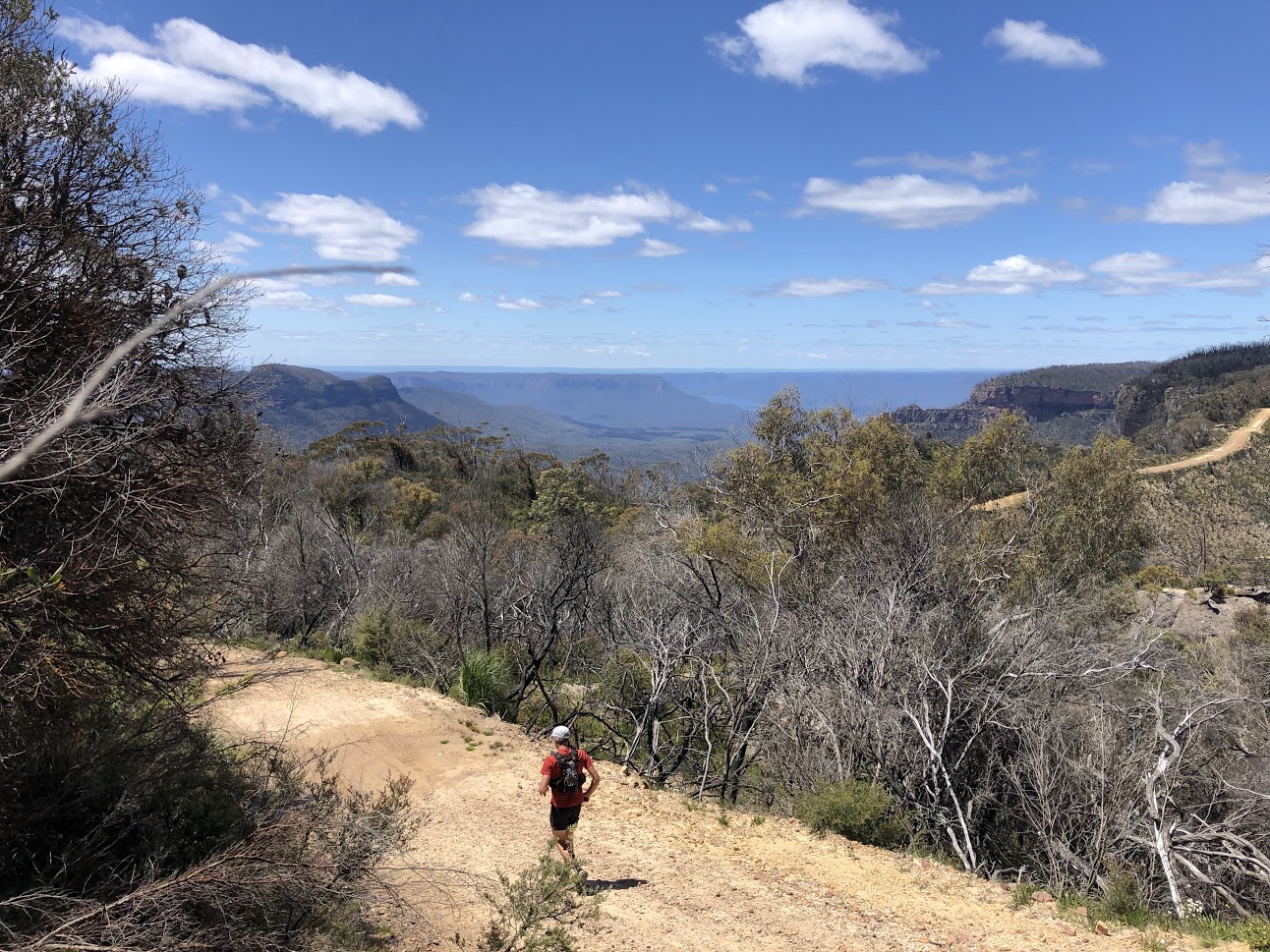
Coachwood and Black Billy Head
As we had planned to get the hardest and most dangerous passes finished before dusk, and after the first six we were on track.
The turnoff for Coachwood Pass was quickly reached - we descended past the familair perched rock on the pagoda.
A minor nav detour that cost us a few minutes near Coachwood Pass was followed by the awkward tree descent to the creek and subsequent re-ascent.
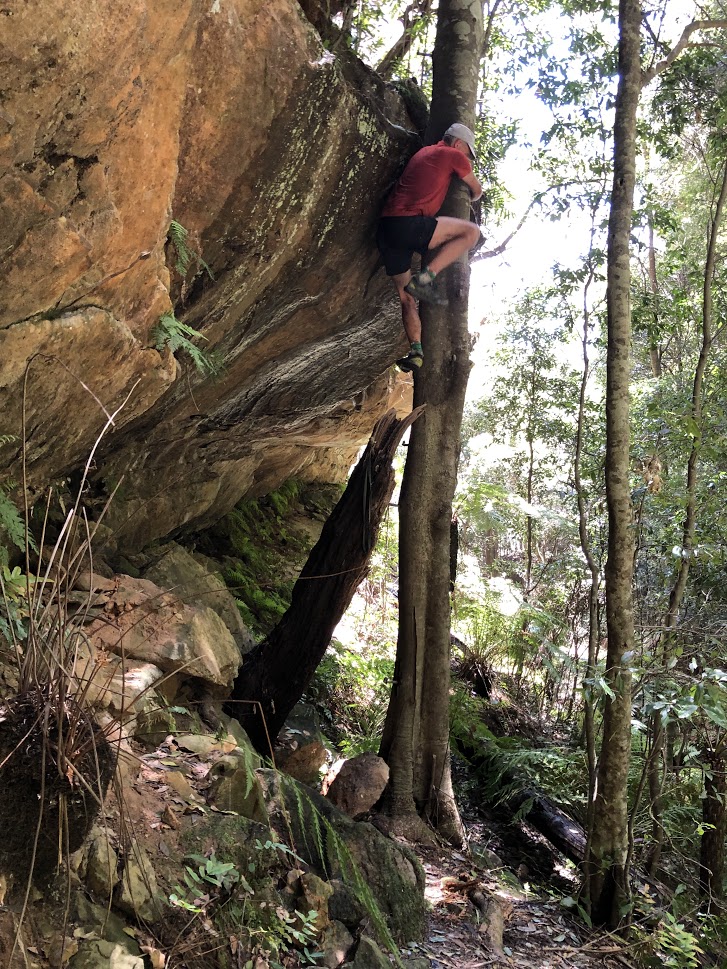
Then we traversed the half way ledge known as the Rice Terrace for three kilometers past two exposed and loose narrow sections.

Another quick stop for food before 1AM while taking in the Westerly views, we continued along the impressive ledge.
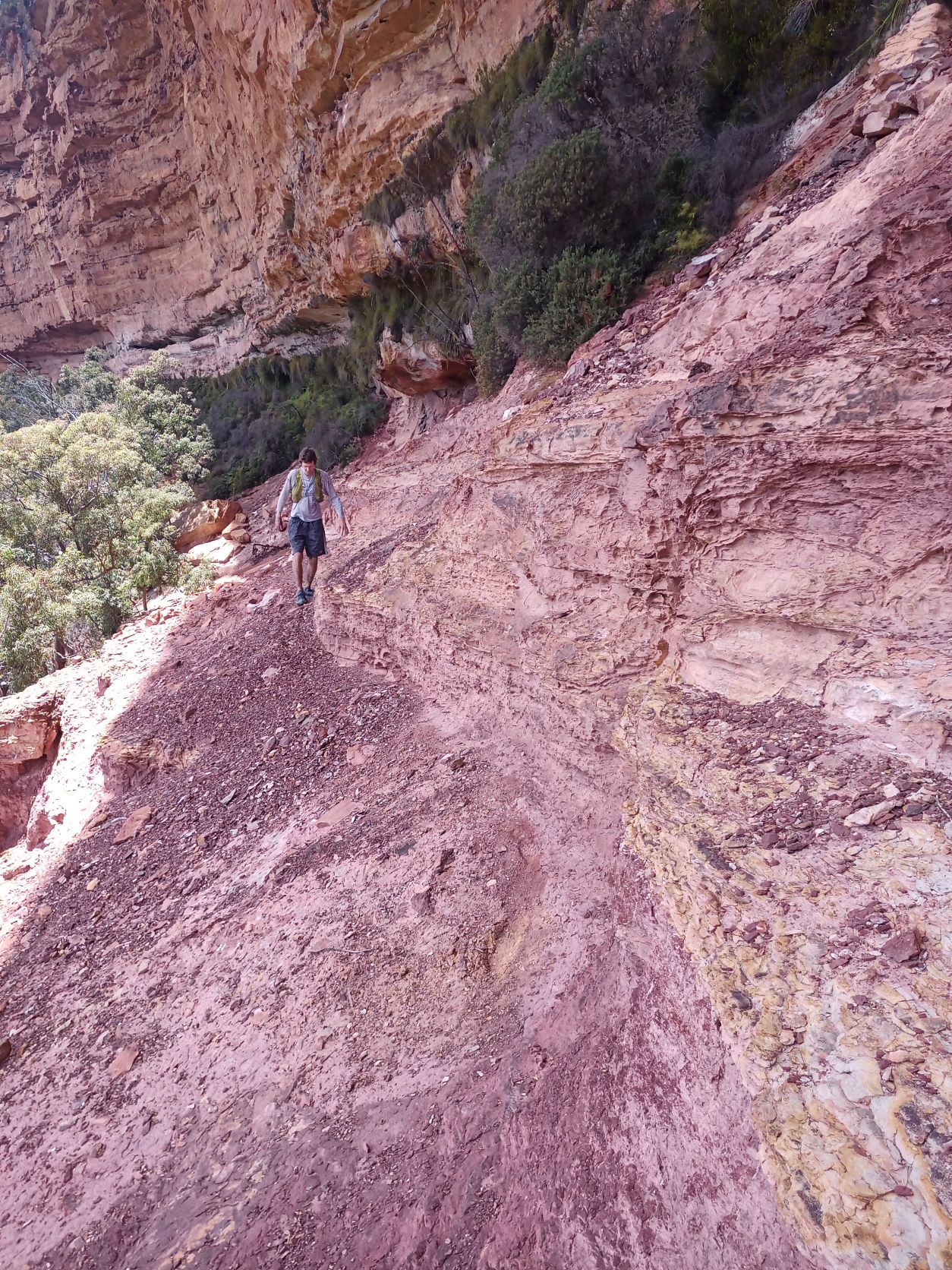
The first loose narrow part is about halfway along it. It’s very narrow, has no useful handhold and nowhere to place protection. It’s followed by a narrow sloping ledge that needs exceptional care for a dozen steps.

Just before reaching the end of the ledge, a second sketchy part is a narrow crawl on loose rock above a significant drop.
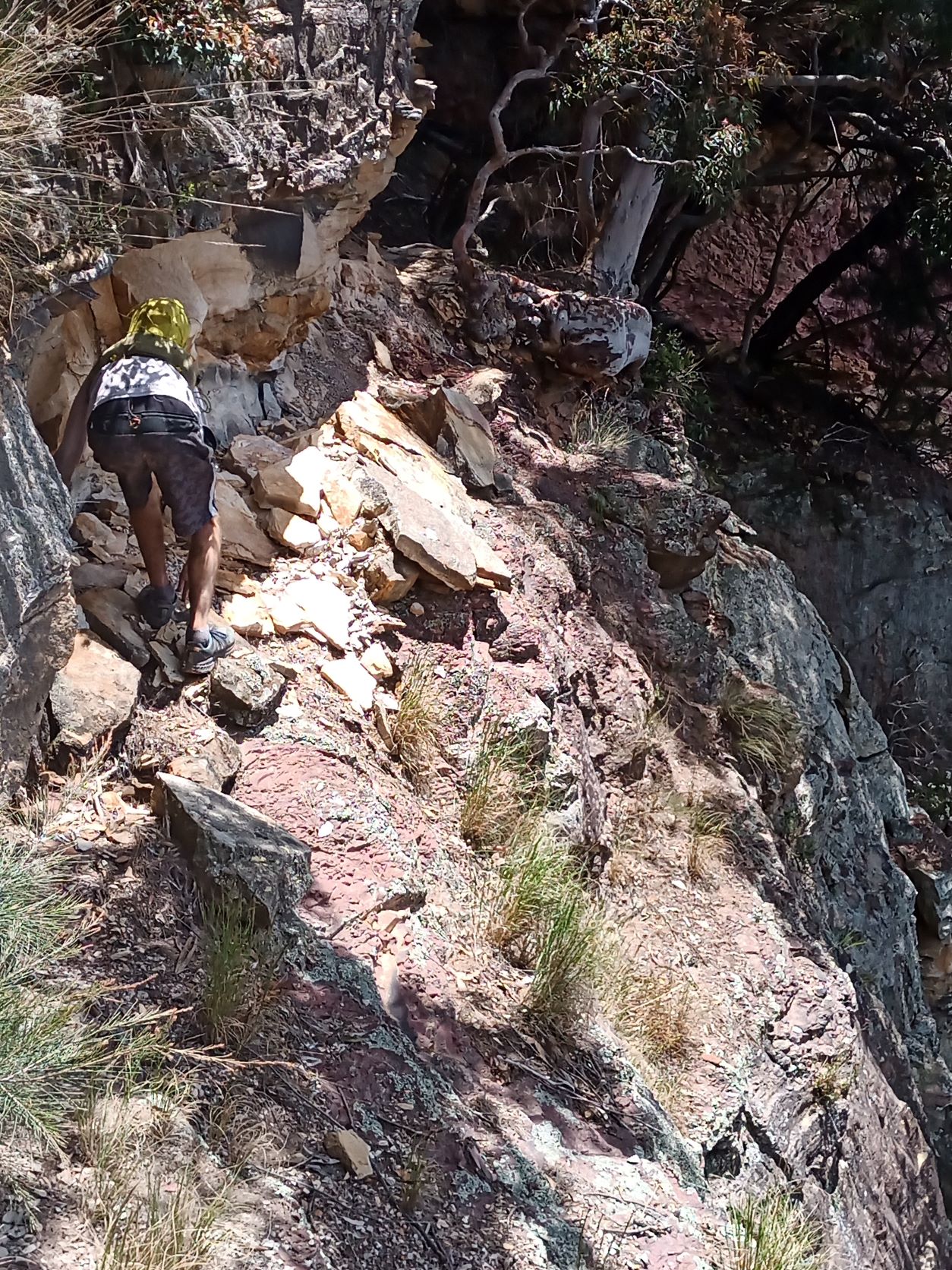
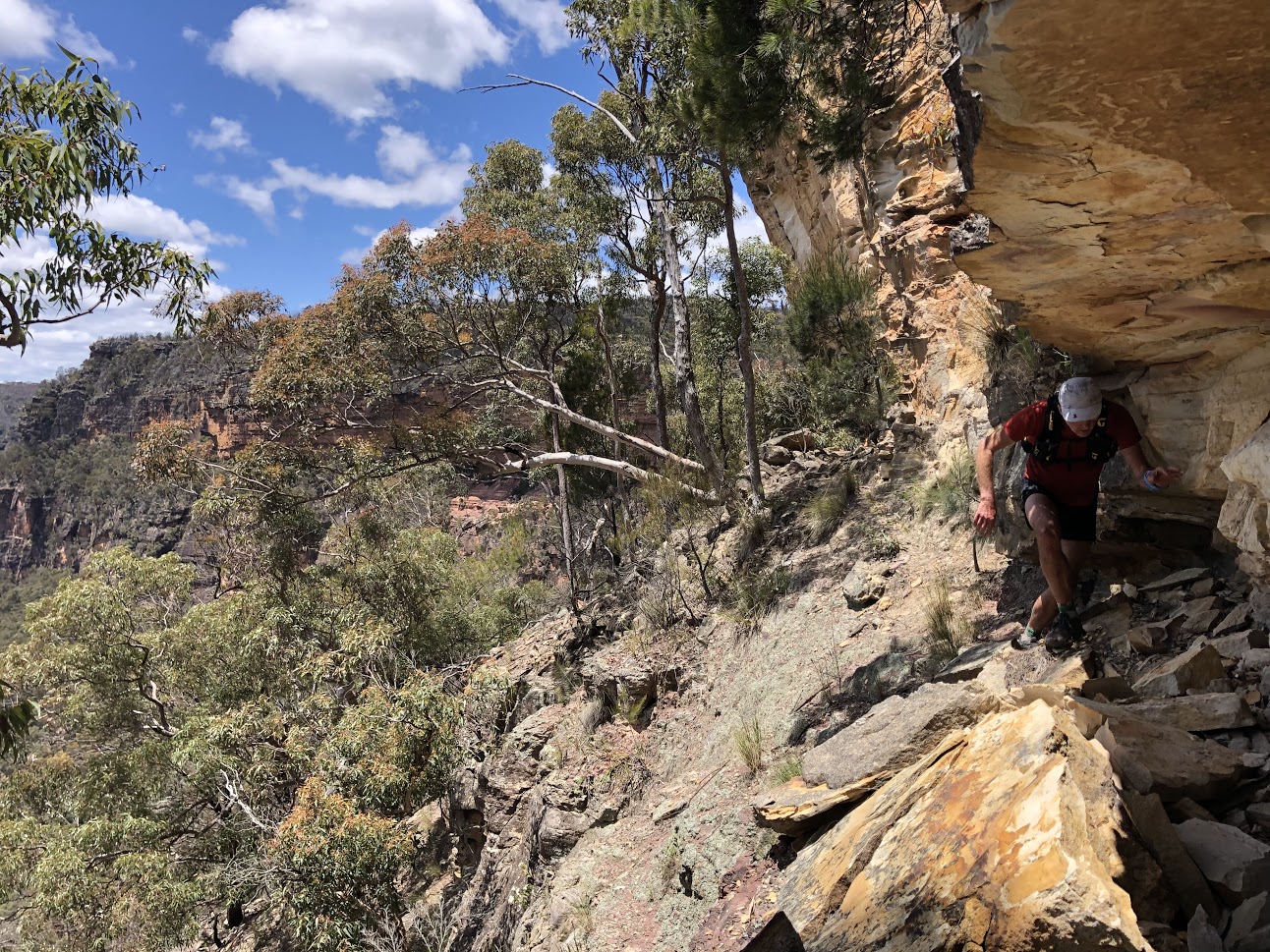
Soon after we reached Black Billy Head. After short debate about the alternative possible routes, we decided to descend to the talus and then reascend right to the plateau and then battle through Fools Paradise.
Black Billy has a couple of climbs, this is the hardest and most exposed. The base is above an 8m cliff, with a medium tree the only protection from a slip. A doubled 30m tape reached was some to spare.
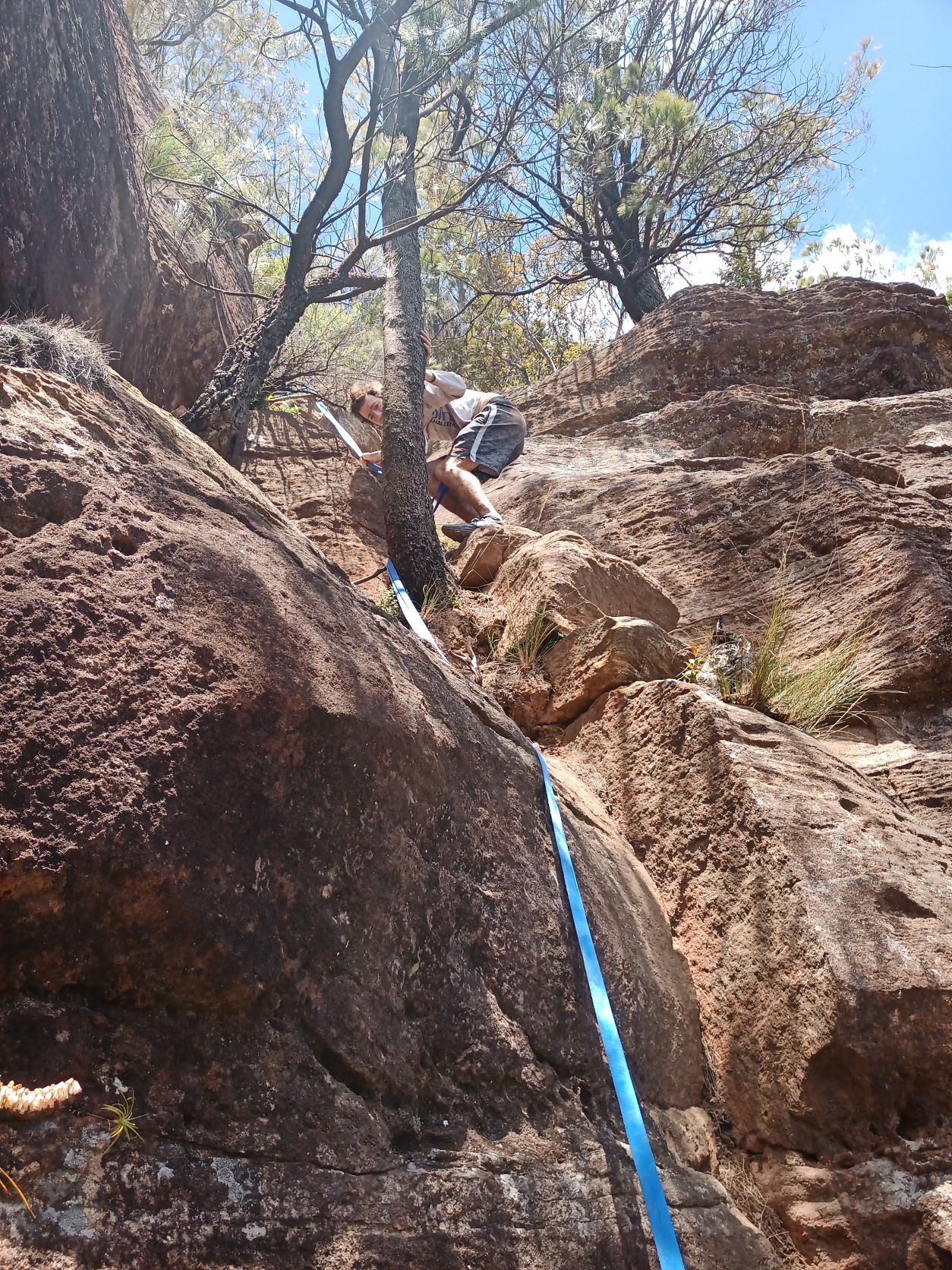
And the second exposed ledge follows immediately. The same 8m drop was front of mind for this little section.

Returning back up all the climbs we battled Fools Paradise back to the fire trail… never again.
Walls Pass
Walls Pass is treacherous. It’s hard to understand why bushwalkers would want to risk a 10m fall on a vertical face with a further drop below it.
Regardless the faint track from the bushfire tower was joggable for the first half, then it turned NE. The regrowth after the 2019 fires and frequent fallen trees made it become harder to follow. We descended one gully too early and serendipitously collected water from a trickle into a small pool. Rounding the next rock found us at the small cairn and a few links of chain that disappeared over the drop. Interestingly, there was also a doubled length of cord hardly thicker than a shoelace that someone must have felt provided extra security.
The chain always seems to be badly placed, although it mostly follwed adequate footholds down the vertical. However, at the base there are few holds of any description and the chain tends to pulls to the South over the overhang.
Ascending it is more difficult. It’s hard to get started - the only handhold is the chain which pulls towards the less favourable side, and with no footholds it’s impossible to counteract the tension. It’s a bit of a leap of faith aided by a stunted and slightly wobbly fern.
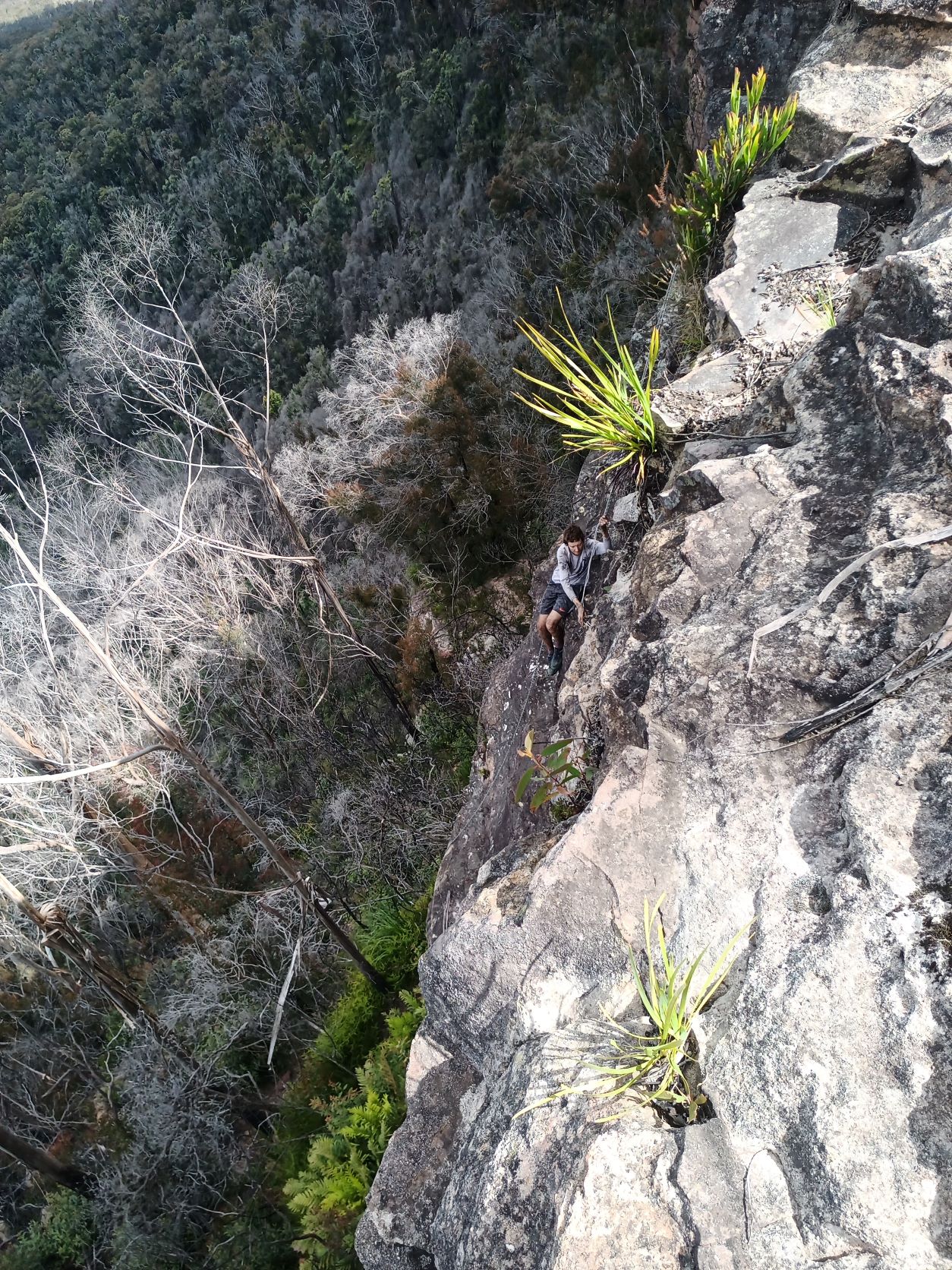
The shoelaces next to the permanent chain. We had completed the eigth Pass by 3:30PM.
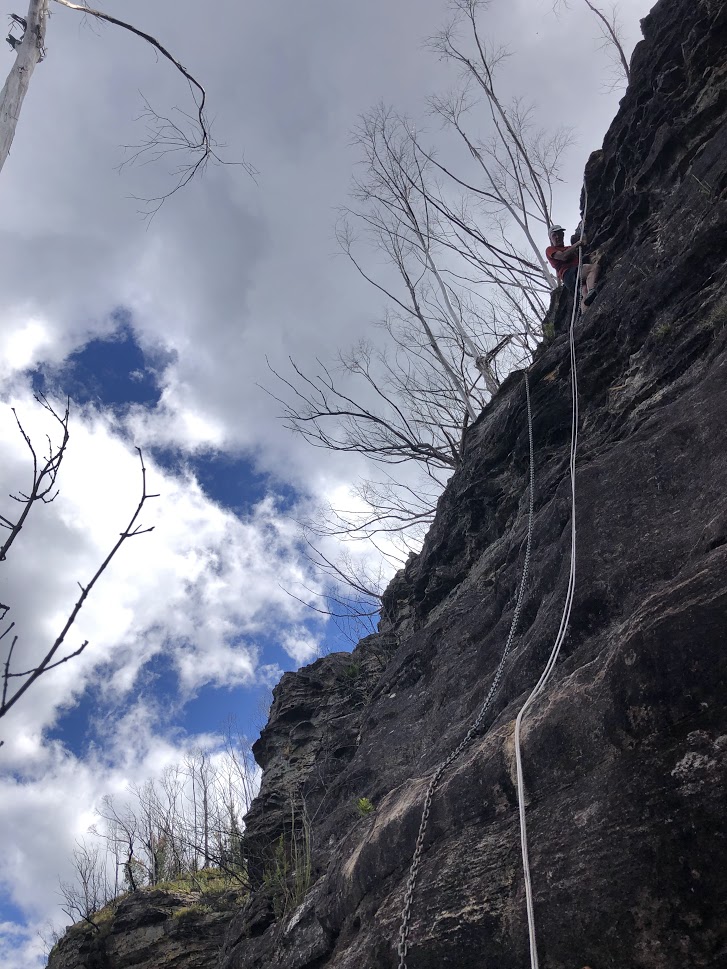
Carlon Head
By the ninth pass Walls Pass a vertical 9m descent, I was starting to fade, and on the descent of Carlon Chains a small misstep close to the top reminded me to slow down and concentrate. The next two chain assisted descents were easy enough, connected by some spectacular ledges offering panoramas to the Wild Dog Mountains in the West and Kanangra in the South.
And then a couple more easier ones to get within a few hundred meters of Mitchells Creek fire trail, before ascending back to where we had dropped our packs.

Harmils Ledge to GlenRaphael Head and Dunphys Pass
Shortly after hitting the firetrail we left it to bushbash over the gentle slopes and quickly descended to down the broad gully to Harmils Ledge. After a brief stop for water from the recent rains in the gully, we headed down to very close to the edge of the waterfall. The logbook was completed before heading South again along the ledge.

The ledge has some spectacular sections and no especially exposed sections.

We made good progress and soon reached GlenRaphael Head. A convenient fixed tape got us past the big step down to the steep bluffs. The last 4m is a chimney which presented few problems for our by then blackened legs.

Descending with care further to the saddle we turned Eastwards and more steeply through the vegetation to reach the gully that led to Dunphys Pass. The Pass was easily ascended, the logbook completed and we followed the ledge around to the easy exit up to the GlenRaphael Swamp. By this time we needed another quick food stop, then headed over the swamp keeping mostly dry feet and back up to the firetrail.
With only the final two easy passes remaining the sun was reflecting off the bottom of the scattered clouds. It was 7:40PM.
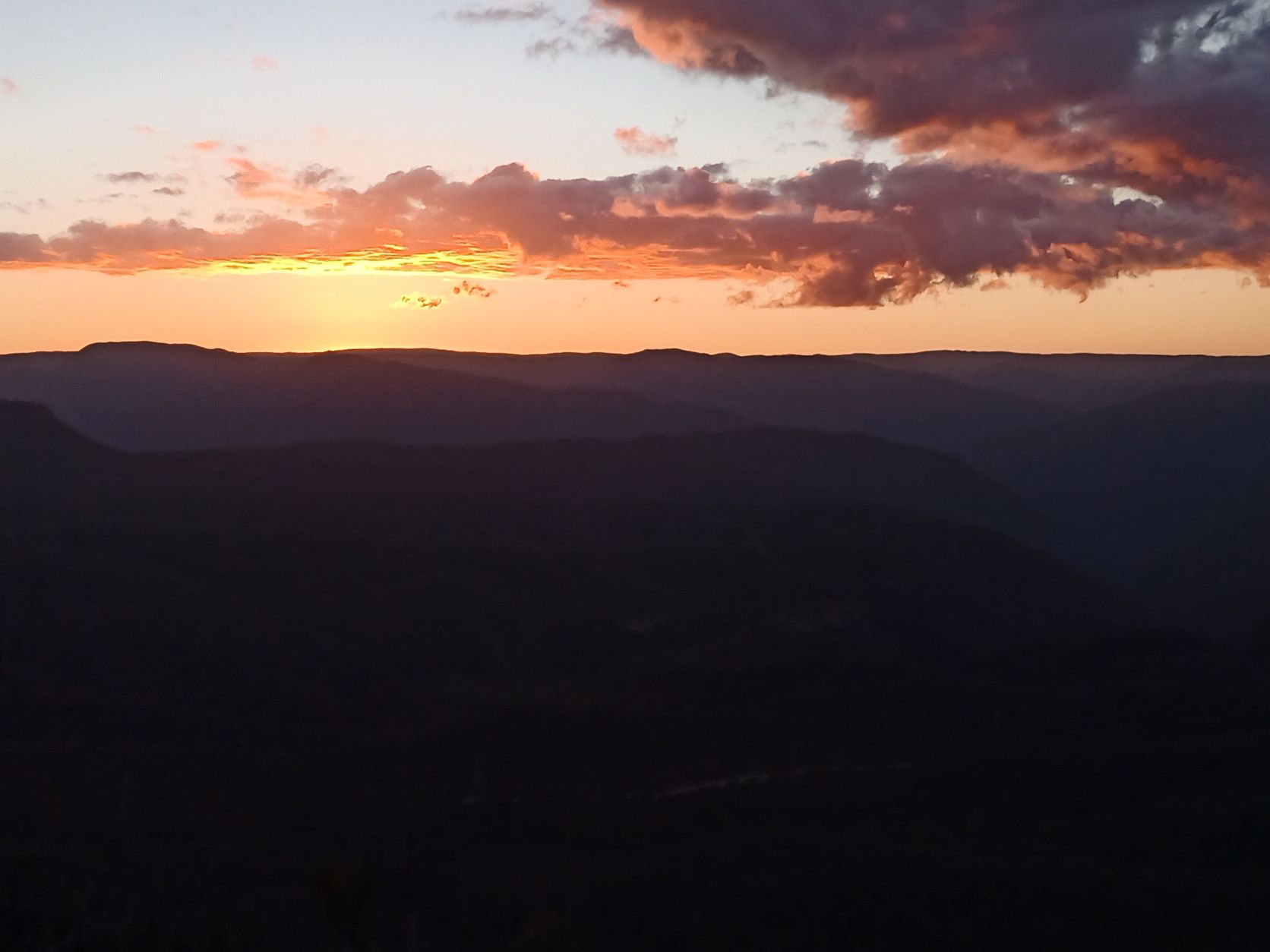
By this time we knew we had enough daylight to get them all done in the day.
Wallaby Pass and Tarros Ladders
Jogging to the Southernmost tip of the plateau we reached the end of the firetrail. The Wallaby Track is not especially photogenic and was completed in under ten minutes. It finished within 20m of the base of Tarros Ladders, completed the final two within twenty minutes before the light began to fade.
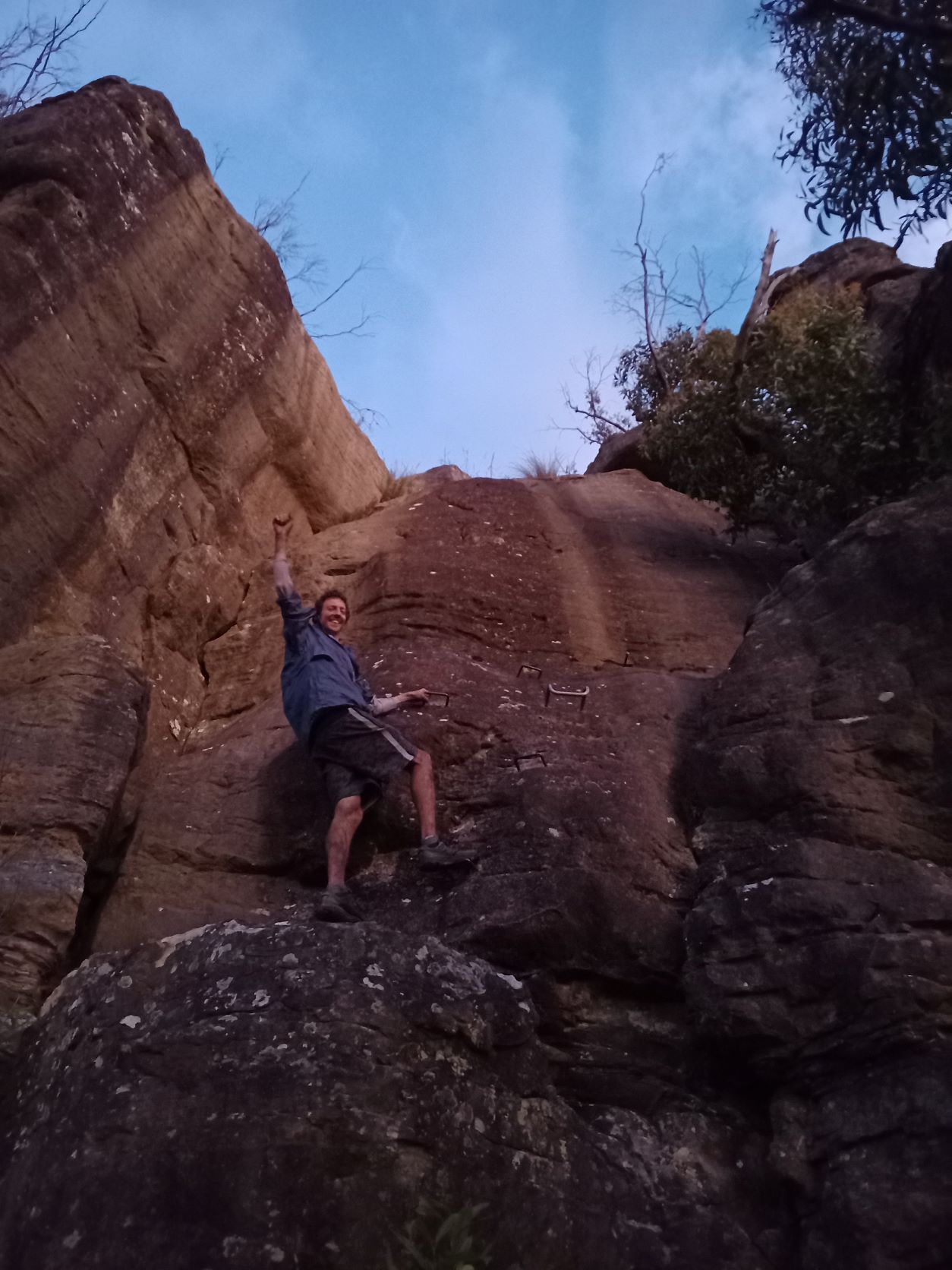
The wind started to become chilly for the 10km shuffle back to the car under the full moon. There was no need to use our head torches. We only stopped on the big hill briefly for water.
We finally hit the car park moments after 10PM.
Safety
I’d strongly suggest that anyone attempting this should be familiar with every one of the passes beforehand - we had both done them all previously. There are good tracks to the well used passes, only rough pads or scattered cairns to a few, but some are completely unmarked. A GPX trace will only be accurate to ten meters or so - that’s often not enough to locate the exact ledge or cliff where the safest (or only) descent route lies, particularly as GPS is unreliable close to the cliff faces.
The photos show how exposed some of the passes are. The ledges we traversed are 100m above the valley, some narrow with only loose, sloping and eroded gravel underfoot. There is significant exposure in at least a dozen sections. Wet or windy weather would increase the degree of difficulty - pick a good day.
The Mountains had rain a couple of days prior, this provided us with water at a few drips and soaks along the way. However, you need a solid plan for water - there are very few reliable sources on the Southern half of Narrowneck, and none at all anywhere on the fire trail.
Reflections
After completing the day, I’d make two or three significant changes to our route resulting in a similar distance with more vert but with less bushbashing, resulting in a more pleasant trip and maybe even a faster time.
The Dixons Ladders to Diamond Head backtracking cost us 30+ minutes, a better route would be to descend to the waterboard track, follow the tramway and ascend Diamond head from there. It entails a little extra descent and ascent, but has much less bushbashing and nav.
Choosing to battle Fools Paradise is never a good plan - it always wins. Not reascending Black Billy Head but instead ascending Carlons Head would save around 60 minutes. The downside would be only a little extra descent and reascent.
In Conclusion
The Passes Of Narrow Neck a significant undertaking that definitely needs thorough preparation and familiarity with the route and terrain, as well as a good head for heights. There are spectacular views throughout and impressive ledges to traverse. By the end expect to be covered in charcoal, battered and scratched by the scrub and to have had an unparalleled adventure in the wilderness of the Blue Mountains.
A little while afterwards the trip was accepted at FKT… along with a short podcast.
Stats
In total I logged 4500m of ascent over 53km, nearly 20km of firetrail and 35km of offtrack walking and scrub bashing. We had planned to take advantage of a good weather window and started at daybreak enduring a chilly 6C jog to the first pass. It soon warmed up to a pleasant 18C with a light breeze and only a few clouds throughout the day.
A very long day
53.0km
4500m of ascent.
Elapsed 16:40